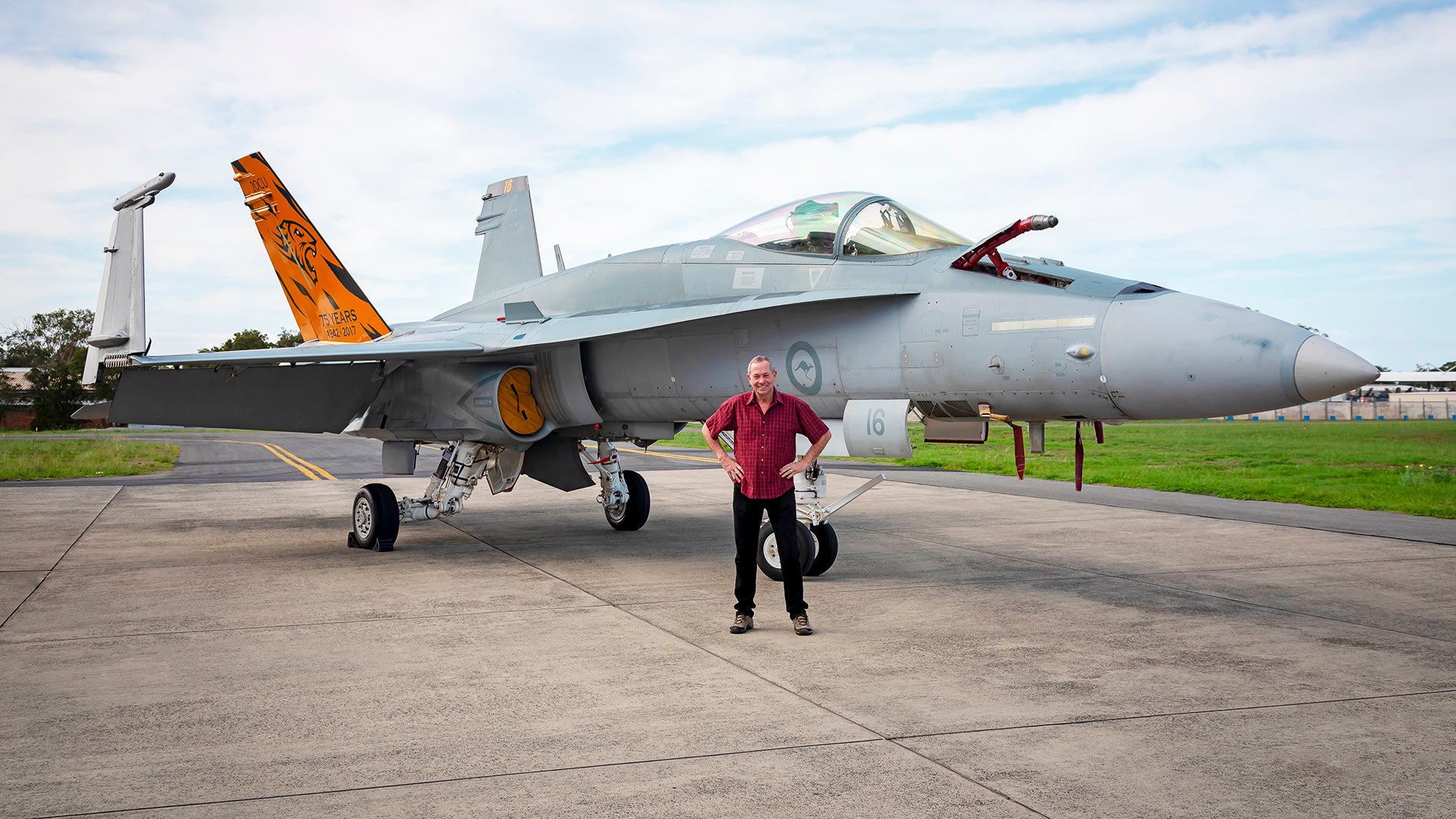For the last 30 years, Don Kirlin has been flying for the airlines, working on real estate deals, setting up the world’s biggest skydiving meets, and building a private air force the likes of which even he has a hard time believing is possible. Just last month, The War Zone was among the first to report that his company would be purchasing multiple squadrons worth of surplus Royal Australian Air Force (RAAF) F/A-18 Hornets to be used in the contractor adversary air support role here in the United States. In that role, they would primarily fly against U.S. military fighter pilots, replicating aerial threats from potential enemy nations. So basically, they are bad guys for hire, but strictly for training and development work.
Now, not only do we have all the details on that purchase, which is even more impressive than it initially seemed, but we talked at length with the entrepreneur owner of Air USA, located in Quincy, Illinois, about his company’s past and what is turning into a remarkable, if not downright historic, future.
Don Kirlin imported his first foreign military jet, and L-39 Albatross, in 1994, at a time when doing so was an extremely complex and convoluted affair full of pitfalls and unknowns. Since then, he has repeated the process dozens of times over and was the first owner of a private MiG-29 Fulcrum in the United States, among a long list of other exotic flying firsts. He now holds eight licenses with the Bureau of Alcohol Tobacco and Firearms (ATF), allowing him to own military machine guns and cannons, as well as thousands of rounds of ammunition to fire through them.

He was also one of the early pioneers of the then-fledgling, if not wholly experimental, adversary air support market. In the early 2000s, he joined forces with the Airborne Tactical Advantage Company (ATAC), which was blazing a trail with their contracts with the Navy to supply fast jet targets and electronic warfare pod toting adversaries that mimic everything from enemy cruise missiles to fighters for Navy and Marine fighter aircraft and Navy surface combatants to train against.
During those early years, Air USA worked as a subcontractor for ATAC, flying the vast majority of the contracted subsonic adversary support flight hours. So, Kirlin and his company’s experience in what is now an exploding adversary support marketplace dates back to its very genesis.
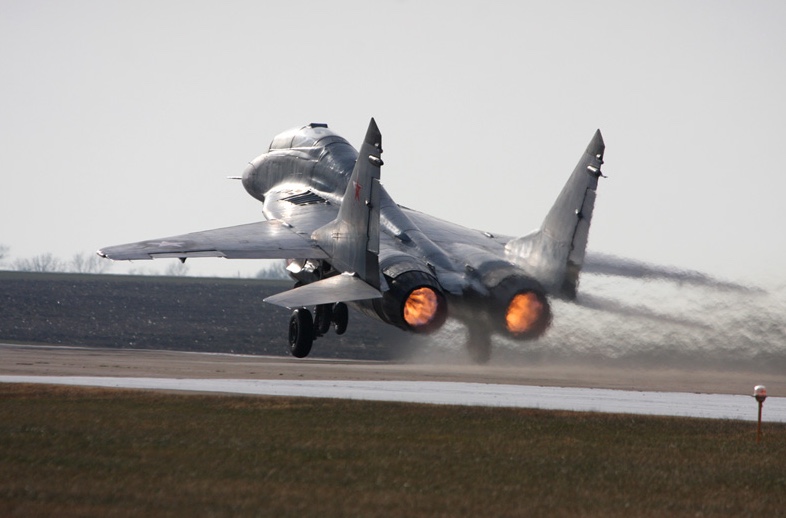
Fast forward to today and Kirlin now owns an impressive fleet of ex-military aircraft that perform a wide number of roles for the Defense Department, from training Joint Terminal Attack Controllers (JTACs), the modern designation for Forward Air Controllers on the ground, to saturating the sensor systems of America’s most advanced tactical fighters with aggressor adversaries in the air. With the individual contracts that will underpin the Air Force’s gargantuan adversary air support tender about to doled out, Air USA’s operation has to grow in capacity and complexity in order to even attempt to meet demand.
Enter the most spectacular private aircraft purchase of all time—Air USA’s acquisition of all of the Royal Australian Air Force’s remaining F/A-18A/B Hornets. Canada had bought 25 prior to this deal going through. The jets Air USA is slated to receive, 46 in total, of which 36 are flying today, will be replaced by the F-35A Joint Strike Fighter within the RAAF’s ranks and thus will be totally retired from service by the end of 2021.
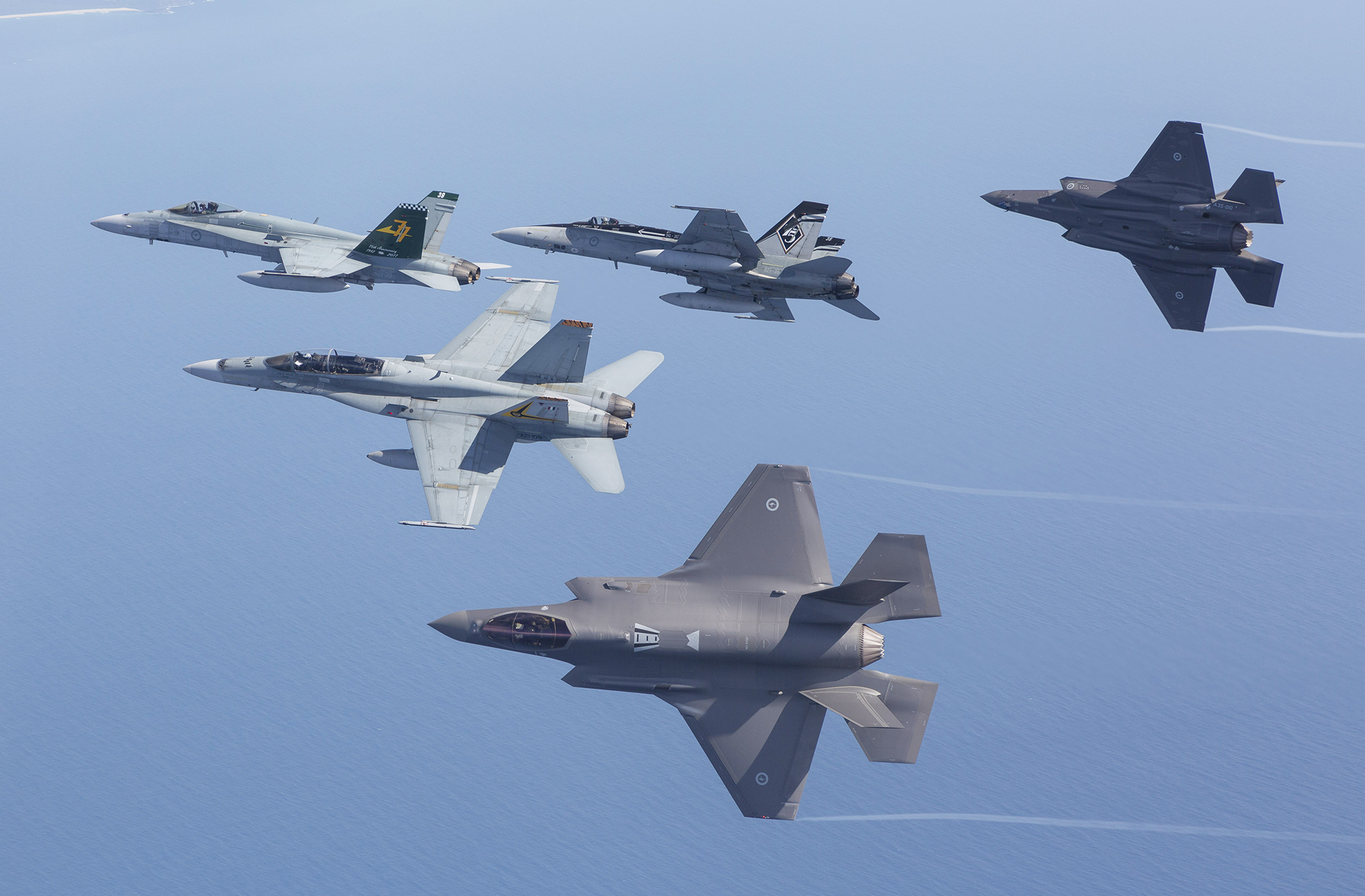
Although the terms of the deal have not been disclosed, the purchase does include all of the RAAF’s F/A-18 spare parts inventory and test equipment, valued at over a billion dollars alone, according to Kirlin. Those parts will be incredibly valuable as Air USA is planning on putting every single airframe it receives back into service—not just the 36 aircraft that are flyable today, but the other 10 that are not, as well.
Those jets just need inspections and are not parted out or grounded for any other reasons. This will allow Air USA to operate at least three fully outfitted squadrons of the 4th generation fighters at all times, which Kirlin hopes will be forward deployed to key bases around the United States where they will primarily help give fleet pilots, testers, and tactics developers, a run for their money in the air-to-air combat arena.
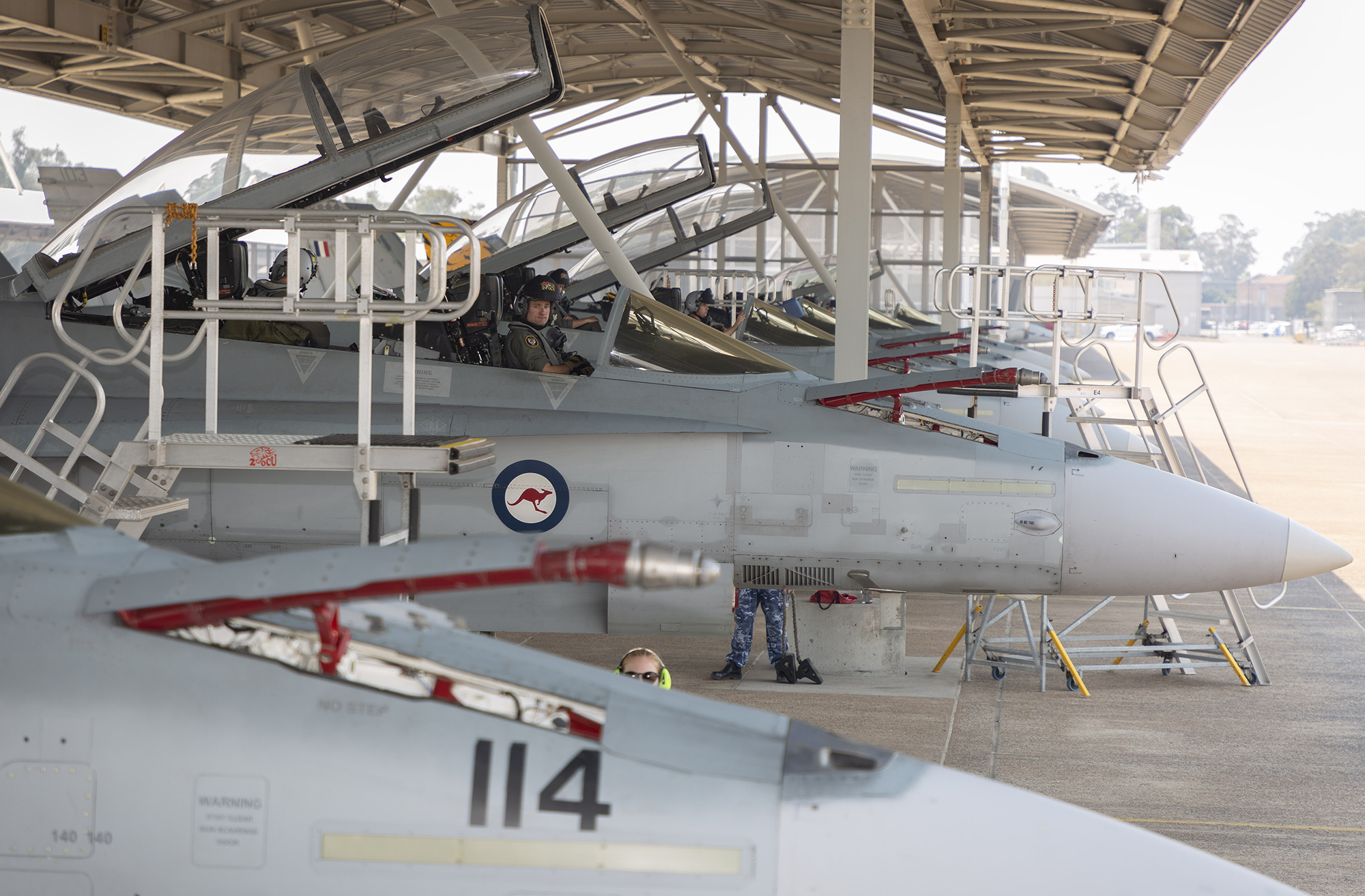
These are not Hornets in some dated configuration, either. The RAAF spent a lot of money keeping its legacy Hornet fleet relevant until replacements arrived. One of the most important capabilities the jets come with is the bolt-on Elta EL-L/8222 (license-built in the U.S. under the L3Harris Advanced Capability Pod name) electronic warfare pod. These Israeli-designed pods are pretty much the world standard in modular self-protection jamming systems and are used on the Pentagon’s own aggressor fleet, as well as by various nations around the globe on frontline aircraft. You can learn just how powerful this system is, being able to turn even highly antiquated aircraft into formidable and deadly aerial threats, especially when paired with unique tactics, in this past piece of ours.

All of Air USA’s secondhand Hornets feature the AN/APG-73 radar—the same one that is found on the F/A-18C/D and early F/A-18E/F Super Hornets—that differs from the less capable AN/APG-65 radar the A/B Hornet was originally equipped with. The AN/APG-73 remains a very capable radar set and is largely superior to anything else on the adversary market at this time. Kirlin also informs us that the radar and electronic warfare pod are integrated in such a way that the aircraft can simultaneously jam and engage (jam and shoot) enemy targets, which he doesn’t believe exists anywhere else on the adversary market and is a critical capability when it comes to mimicking more advanced foreign fighter threats.

The jets also come with their Northrop Grumman AN/AAQ-28 LITENING advanced targeting pods, which are hugely capable in the air-to-ground targeting and non-traditional reconnaissance realm, as well as for positively identifying aircraft visually at long ranges. You can read all about this function and its value in this past piece of ours. In addition, the Hornets come with 68 Joint Helmet Mounted Cueing Systems (JHMCS), which offers helmet-mounted display capability that drastically increases a pilot’s situational awareness and high-off-boresight targeting for close-range air-to-air missiles. This will make it easier for these aggressor jets to simulate foreign capabilities of a similar nature.

Overall, Kirlin informs us that that the Aussie Hornets are being imported in exactly the same configuration as they are flying operationally today the RAAF. Nothing is being removed, even the jet’s Link 16 data-link system and its internal M61 20mm Vulcan cannon are staying put.
As for the condition of the surplus Hornet fleet, Kirlin says they are in incredible shape and show little signs of corrosion—likely a result of their often hot and dry operating environment down under as opposed to the salty conditions aboard aircraft carriers that U.S. Navy Hornets have had to endure.
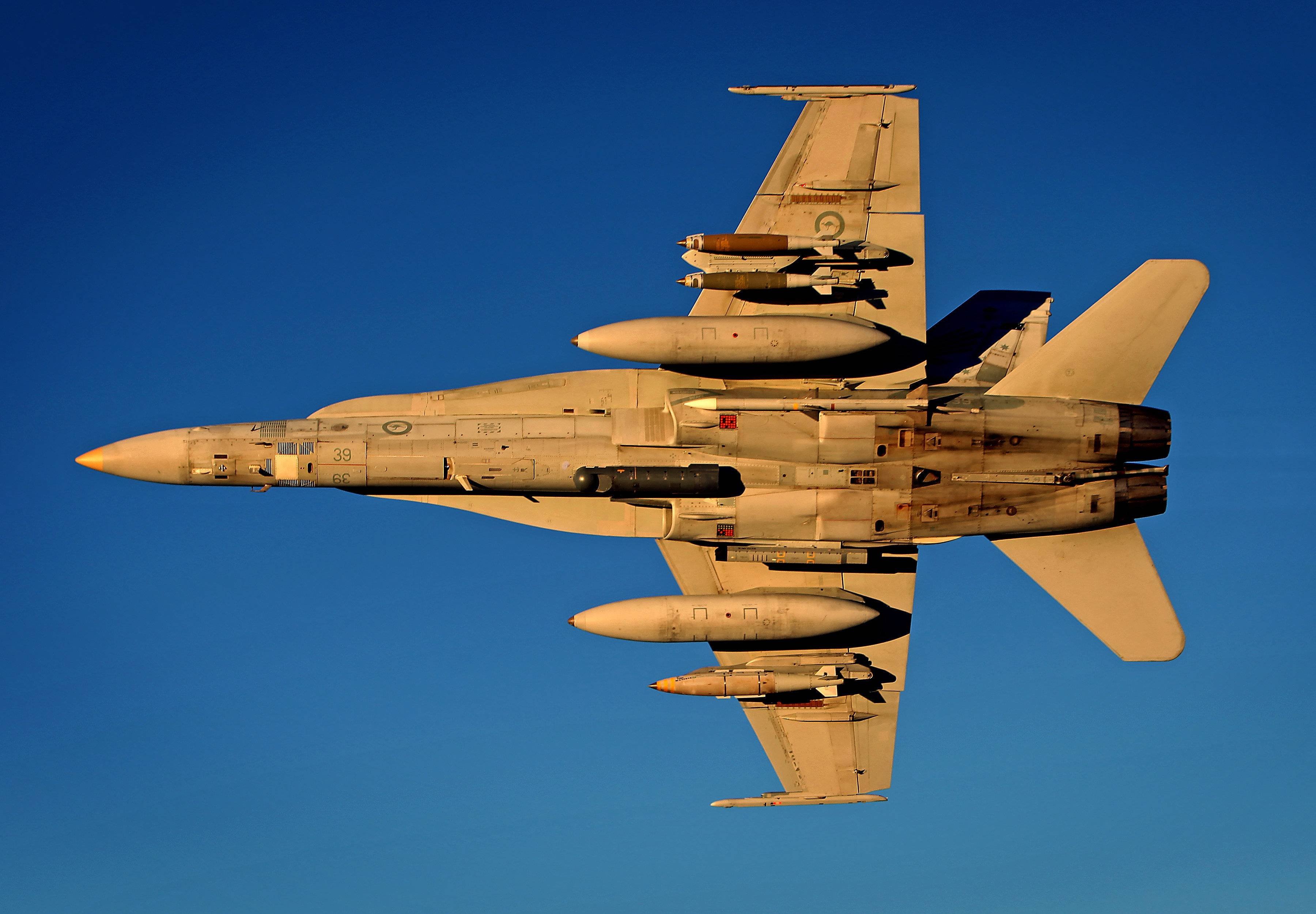
10 of the fighters have had their center barrel sections replaced—a critical structural upgrade that is necessary once Hornets hit a certain level of fatigue—but the rest of the fleet shouldn’t need them. Kirlin says that since the aircraft have never trapped (landed) aboard or launched off a carrier, which causes extreme stress on the airframes, they should be able to operate continuously through 2035 and possibly even beyond.

The first aircraft will be heading in Air USA’s direction soon. For transport, the jets have their outer wings and horizontal stabilizers removed, but that’s all the dismantling needed. They will be shipped via ocean freighter and it will only take about 60 days from arrival to get them in the air. The rest of the 36 flyable airframes will be flown in batches across the Pacific with the help of a tanker and will be ready for operations shortly after they arrive in the United States. The last 10 that are grounded due to lack of inspections will come over last.
As for what the jets will look like once they lose their RAAF roundels and become Air USA jets, Air USA’s owner wasn’t entirely sure, but he does like the paint on one of his MiG-29s, which could be replicated on at least some of the Hornets. He also mentioned that a jet-black Hornet would be fun to have, just for the heck of it.
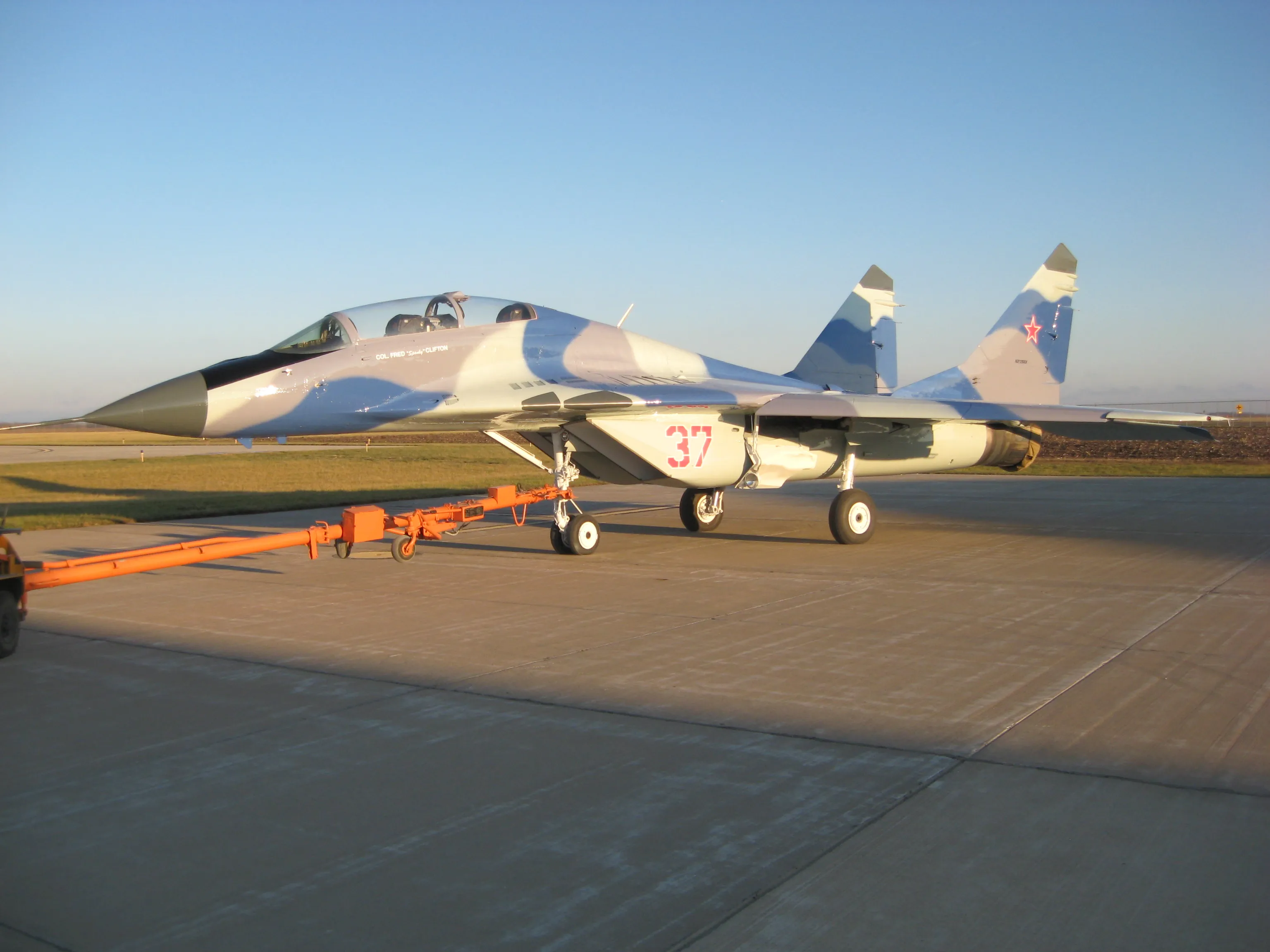
Kirlin says that he looked at all the aircraft his competitors have bought, especially the Mirage F-1s from Spain and France and Atlas Cheetahs from South Africa that his competitors ATAC and Draken USA have snapped up, and passed on them. He actually showed me the approved ATF forms for importing these jets dated years ago as proof of his claim. Three primary reasons were behind his decisions. The first was concern that they simply weren’t the right plane for the job—he wanted something more advanced. Second, that working with certain foreign original equipment manufacturers (OEMs) would be a major hassle.
Finally, he is a firm believer in buying flyers, not aircraft that have been mothballed for years, if at all possible. With this in mind, the Hornets offered Kirlin a ready to go advanced ‘air force in a box’ that wouldn’t be a huge hassle to regenerate once they reached the United States. They would also have great support from a domestic OEM—Boeing—and support and maintenance could be outsourced to firms that are already doing so for some Marine and Navy Hornet operations.
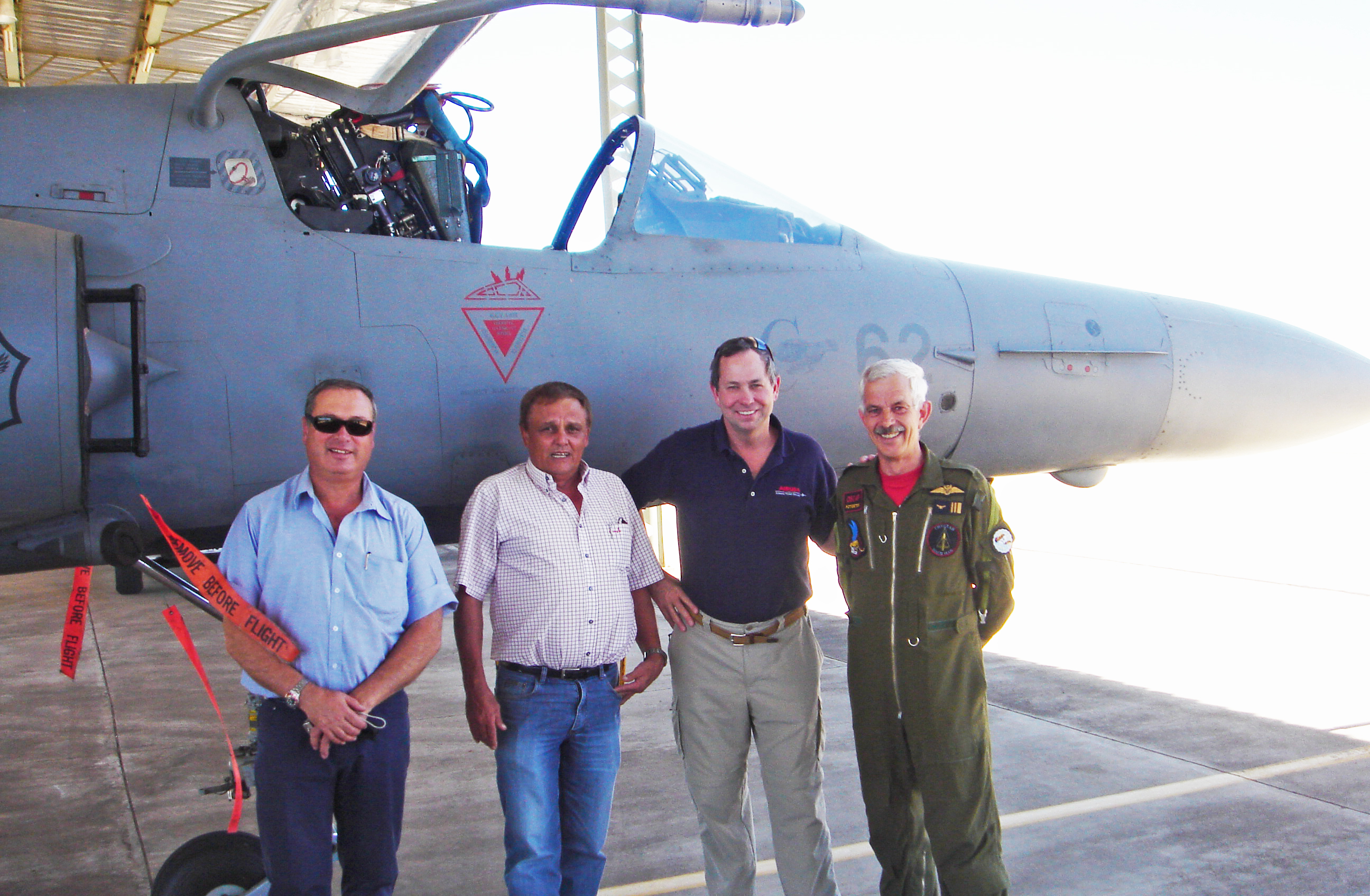
The balance between cost and capabilities is a huge factor in the adversary air support marketplace. Does having the most advanced private tactical aircraft on hand for hire mean they will be too costly for the Pentagon’s tastes? This has turned out to be the case in at least one limited contract that the Navy recently awarded, but Kirlin doesn’t think so overall. He says his team did a deep market evaluation and cost analysis on what ‘legacy’ Hornets cost to operate, including using the Navy’s own historic numbers provided by the General Accounting Office, as well as looking at what the competition has to offer, and the results were very positive. But for Air USA, the strategy isn’t really about simply having the best and most capable jet on the ramp, it is all about offering the customer a big menu of choices and allowing them to tailor their aircraft selection based on their needs, not on what is being offered alone. This is where Air USA’s growing diverse fleet of aircraft comes in to play.
Right now, the company’s budding air force includes 10 Hawks, four L-39ZAs, and two L-39s. The Hawk jet trainers, which originally came from South Korean stocks, are deceptively capable aircraft. Like all of the Hawk family, they are quick and nimble, as well as reliable and efficient, but they now also pack one hell of a sensor and electronic warfare capability. The jets have been upgraded with Elta’s ELM-2052 active electronically scanned array (AESA) radar. In fact, they are the only private adversary aircraft equipped with an AESA radar set at this time.

The ELM-2052 is a modular design of Israeli origin that can fit within the tight confines of smaller tactical fighter aircraft radomes, but it is known to be remarkably effective and gives fleet pilots something unique to train against in the adversary air-to-air environment. The jets are also wired to handle the EL-L/8222 electronic warfare pods, like their soon to be Hornet stablemates. Combined with their small size, they are a remarkably formidable and highly dissimilar adversary aircraft.
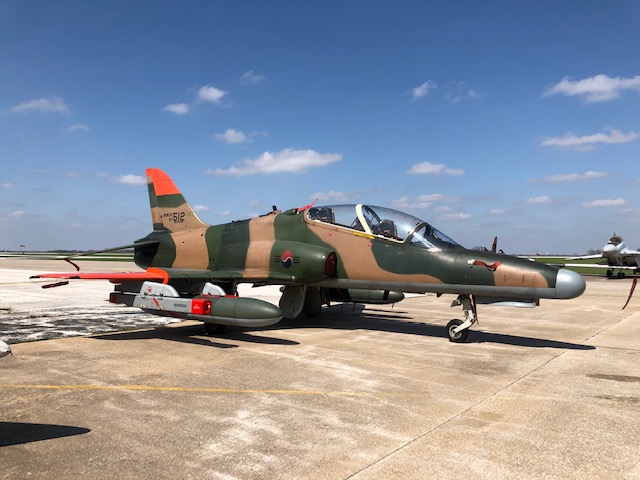
The L-39ZA, which is a combat-capable derivative of the L-39 Albatross trainer, and the L-39s themselves, have lower performance than the Hawk, but they are very efficient and still can lug different types of countermeasure pods, cannons, and other stores. Air USA has even equipped some of them with advanced electro-optical and infrared sensor turrets. Air USA had Dornier Alpha Jets that fell into a category somewhere between the Hawks and the L-39s, but those aircraft were sold to the Nigerian Air Force, which was in urgent need of the type.


In addition to the Aussie Hornet purchase, Air USA also acquired five hand-picked PC-9 turboprop trainers from the RAAF. These aircraft will primarily be used to fulfill the growing demand for cost-effective Joint Terminal Attack Controller training. You can read all about this mission and the contracts being tendered to supply it in this recent piece of ours.
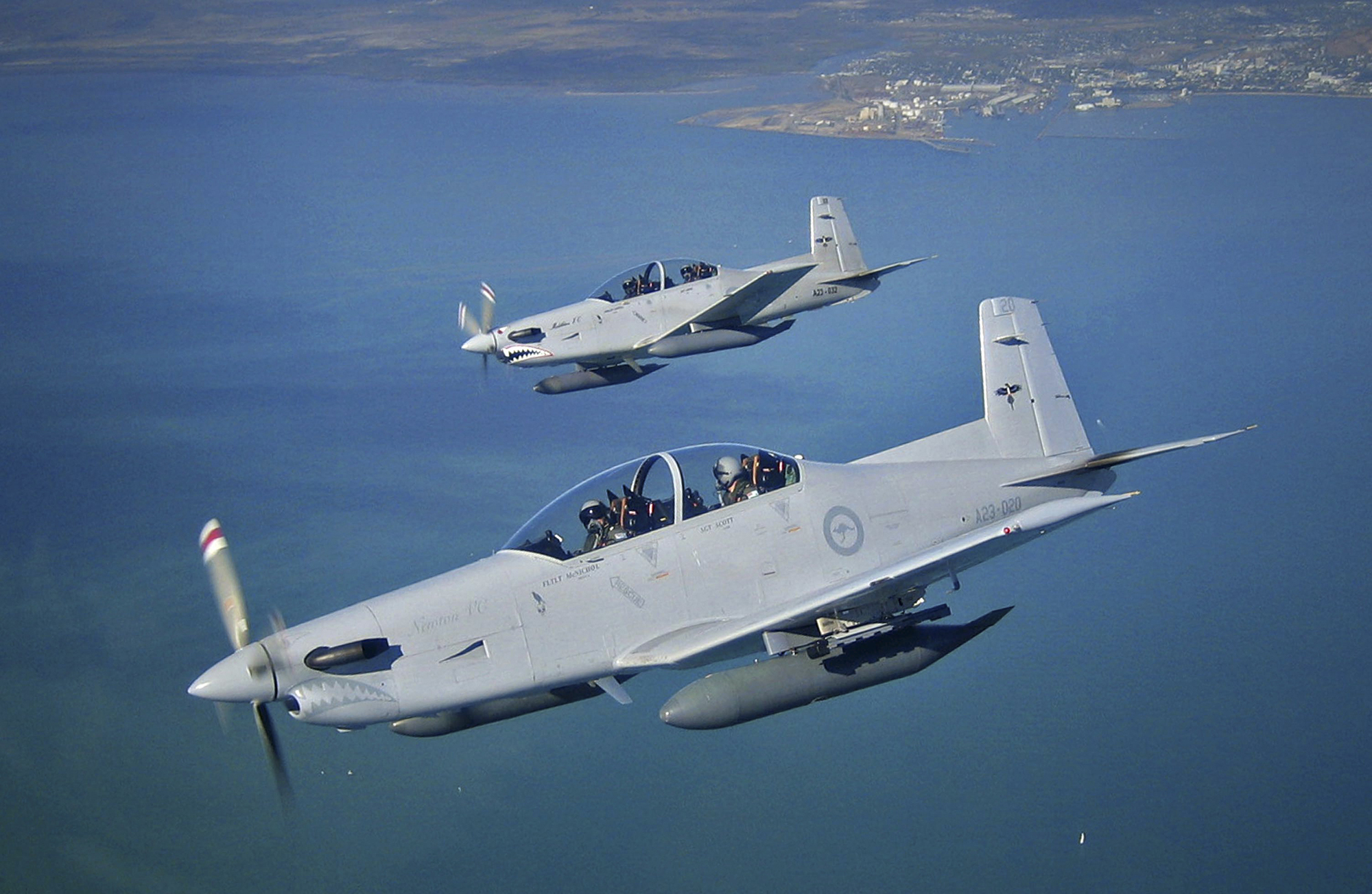
Basically, JTACs need to get time “on the mic” with real aircraft overhead, in both day and nighttime conditions, to get accustomed to organizing the three-dimensional airspace overhead in relation to the battlespace on the ground, and effectively, safely, and efficiently call in airstrikes on enemy targets. This is an incredibly complex and high-stakes job, but using high-performance fighters in the Pentagon’s inventory that cost at least $20,000 an hour to train with is horribly cost-ineffective. As such, being able to provide far less expensive assets via the contractor marketplace for some of this training has become a major priority.

This is not only where the PC-9s come in, but also the fleet of 17 highly modified Cessna T337 Turbo Skymasters that Air USA just acquired from Airscan Inc. These aircraft were totally reworked for overhead surveillance and counter-insurgency missions in places like Iraq and Afghanistan. They come equipped with the hugely capable MX-15 infrared/electro-optical sensor turret and an operator’s station in the back.


The Cessnas, which have a pair of reciprocating turbocharged IO-360 engines found on normal light planes, are extremely efficient compared to their turbine-powered competitors and feature video downlink, encrypted communications, and night vision goggle compatible cockpits, among other modifications. They are also certified under the FAA’s Standard category, not the Experimental category, even with all their modifications, which has a multitude of benefits.

Air USA’s idea here is to provide the lowest possible cost for JTAC training while still having an aircraft that has all the bells and whistles needed to accomplish the mission. Don Kirlin says that from his firm’s perspective, for a lot of JTAC training, the customer just wants the most “time on the mic” for their JTACs as possible. Delivering a very low-cost option, one with extremely high endurance, to accomplish just that is the impetus behind acquiring the highly unique fleet of suped-up and battle-proven Turbo Skymasters.
Kirlin also states that the company has acquired 10 F-5E Tiger IIs that will slot in between the Hawk and the Hornet in the aggressor role. These jets will be totally refurbished and will get a comprehensive upgrade very similar, if not nearly identical, to the one Tactical Air, another adversary air support purveyor, has developed for its large fleet of F-5s. You can read all about Tactical Air and its highly customized F-5ATs in this recent piece of ours.

Kirlin hopes to fit their F-5s with Infrared Search and Track Systems (IRSTs), which will be a huge force multiplier for other aggressors flying alongside them and a real threat to stealthy “blue air” jets, like the F-35, F-22, and B-2. Leveraging a similar open architecture avionics upgrade that Tactical Air pioneered with its F-5ATs will allow far easier integration of an IRST on the F-5 than on other aircraft in the Air USA fleet.
The company also owns a quartet of MiG-29 Fulcrums that Kirlin imported. These jets are basically in factory new condition. They each have roughly just 100 hours on them now, which is basically nothing. The two single-seat models are more parts donors than flying aircraft, with the pair of two-seat MiG-29UBs being airworthy. Although some may wonder why these jets are not used for adversary support roles, they simply are not in demand for a number of reasons. They are not specifically equipped for the mission, do not have a radar, and are not the most efficient flying machines available for the task by a long shot. They have done some missile work with Raytheon air-to-air missile system development in the past, and could be pushed into service if a customer really wanted them, but when you have fully upgraded Hornets in your fleet, who needs a dated MiG-29?

With such a varied inventory of aircraft, Air USA’s unique business aimed at the ballooning contractor tactical air services market can be summed up by the following: give the customer a huge range of options to tailor to their budget and training requirements. In other words, this is not a one size fits all air force for hire. Quite the opposite.
For instance, for basic air-to-air missions, like radar intercept training, maybe a PC-9 or L-39 is fine. For other more dynamic fighter training, maybe a Hawk or F-5 will do. For the most advanced air-to-air training, the Hornet will be available. The customer only has to pay for what they really need. The same can be said for JTAC training. For basic training scenarios, a T337H gives a tremendous amount of capability for the dollar and for “dry CAS” where weapons are not employed, but for more advanced scenarios where weapons are released, PC-9s, or even L-39s or Hawks, would be the aircraft for the job.
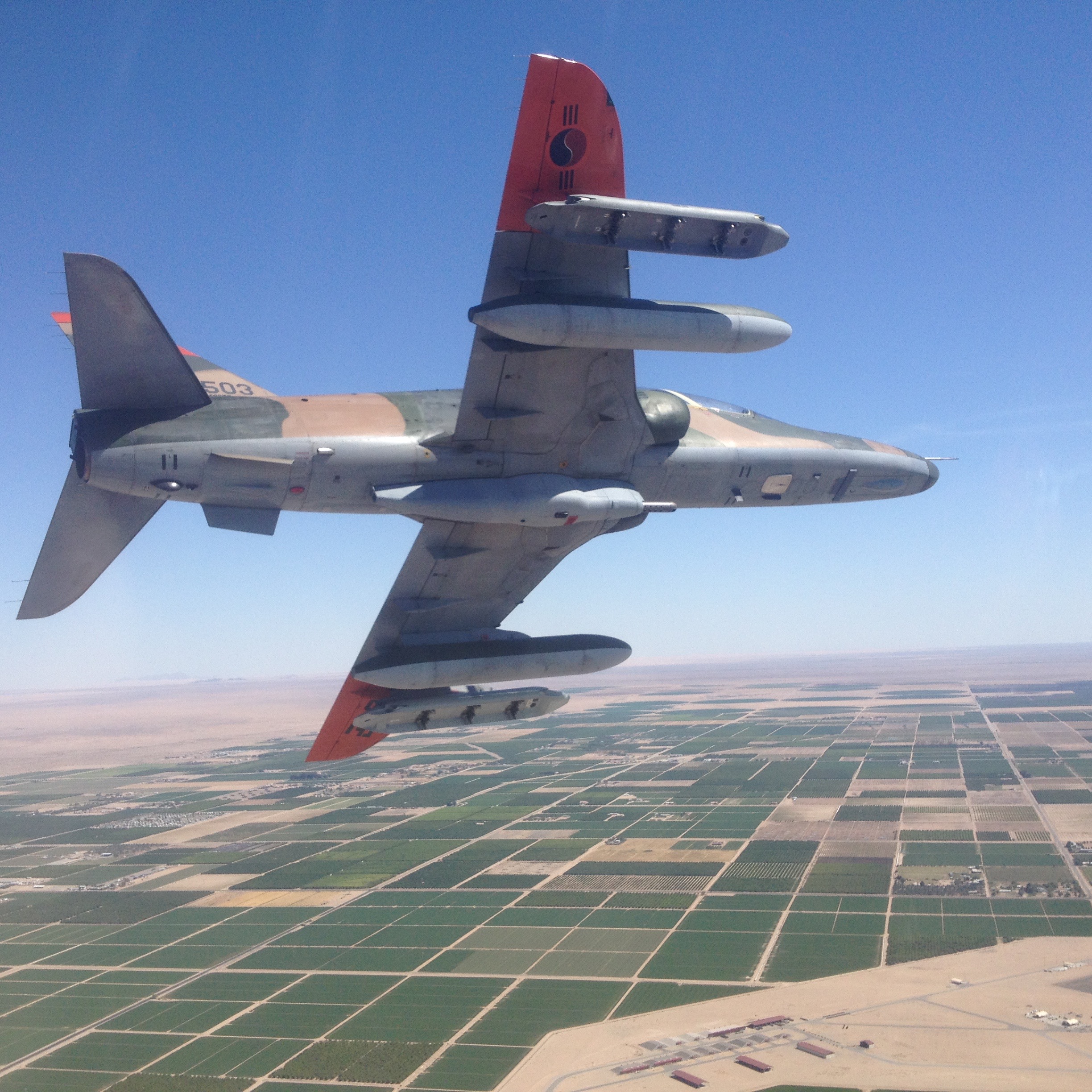
So, it’s all about choice. This business mantra is something Don Kirlin learned by putting on the world’s largest skydiving festival, the World Freefall Convention. When I say large, I mean large. Kirlin tells us that during a past iteration of the event, 5,400 skydivers made 70,000 jumps in just 10 days. Many of those skydivers were sick of the same old jump ships, they wanted a variety of exotic platforms to choose from to enhance their experience. Over 17 years of putting on the event, Kirlin ended up bringing in everything from World War II bombers to a high-flying 727 to help quelch attendees’ demands.


By offering so many creative possibilities, he found that the customer really appreciates options and wants to be able to pay for exactly what they need or desire, nothing more and nothing less. This emphasis on customer choice is now being ported over to the adversary air support market via his eclectic fleet of tactical aircraft for hire.
With choice and platform diversity also comes some really exciting opportunities to layer-in different capabilities on a single adversary mission, which can provide more challenging scenarios for trainees. For instance, pairing the Hawk with the Hornet, the Hawk can share its AESA radar targeting information with the Hornet and vice-versa. Throw in an F-5 with an IRST and even the stealthiest opponents will be prone to detection from Air USA’s aggressor formation. Layering in other aircraft, like L-39s acting as cruise missiles and more, will help really rachet up the complexity that ‘blue air’ forces will have to confront, and all of these capabilities can come from one business relationship.
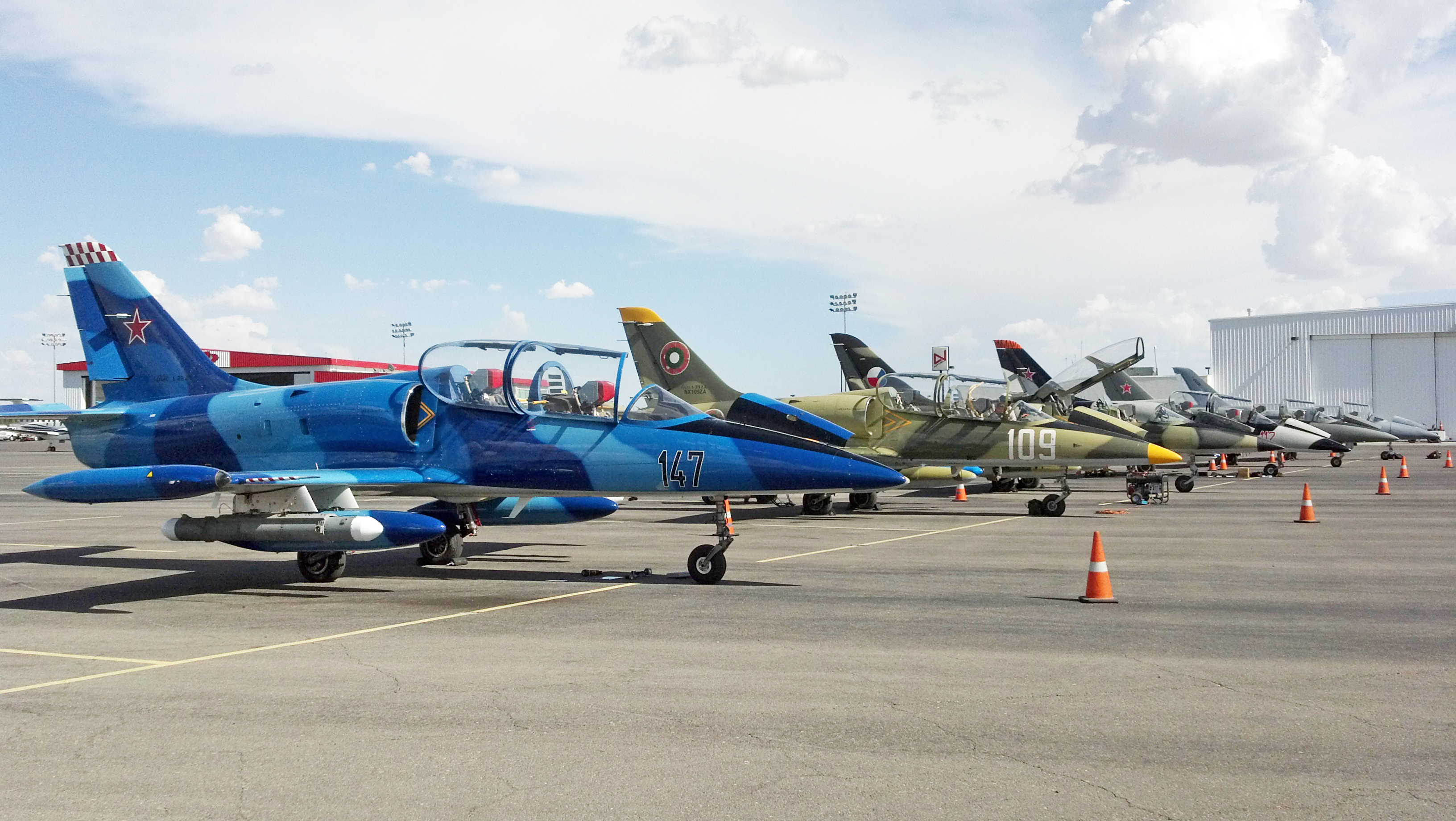
With frontline fighter aircraft becoming increasingly capable, especially in terms of the sensors they carry, being able to challenge them has become far more difficult and often requires a mix of high-performance opposing fighters, as well as saturating them with other, less complex aerial targets. Having a turn-key air force for hire with a huge range of capabilities and performance levels available, makes this easier to accomplish in an efficient and integrated manner and without the Air Force, Navy, or Marines having to task their own overtaxed fleets with the mission. Also, contracting out these services already is more cost-effective than having the military perform them, but with tailorable forces like Kirlin’s, the cost should only go down, not up.
Don Kirlin is truly living what would have been a far-fetched dream not too long ago. He is a man with his own fourth-generation fighter-equipped air force, one larger and more capable than what many entire nations possess. With the introduction of the F/A-18 Hornet into the adversary air support marketplace, especially the number Air USA is bringing to the fight, it could very well be a game-changer, but it also presents risks.
Taking on a supercarrier’s worth of modern strike fighters is a hugely expensive proposition. It is also one that is not without its own physical and liability risks. There will be a lot of pressure on Air USA to not only pay its bills, which will be monumentally huge, but also to operate these extremely high-performance jets in a safe and reliable manner. From what I can tell Don Kirlin seems raring to take these challenges head-on and to get himself strapped into the Hornet’s ejection seat and taking one up for a spin—he is type rated and flies every plane he owns. The Hornet will be no different.
Call it a perk of the job for the man who now owns the world’s most advanced private air force.

UPDATE:
Don Kirlin has provided a couple of additional notes regarding the purchase:
1) No Australian software is provided in the sale and other restricted items will not be supplied.
2) The aircraft are sold as is where is and not warranted nor guaranteed.
Contact the author: Tyler@thedrive.com
